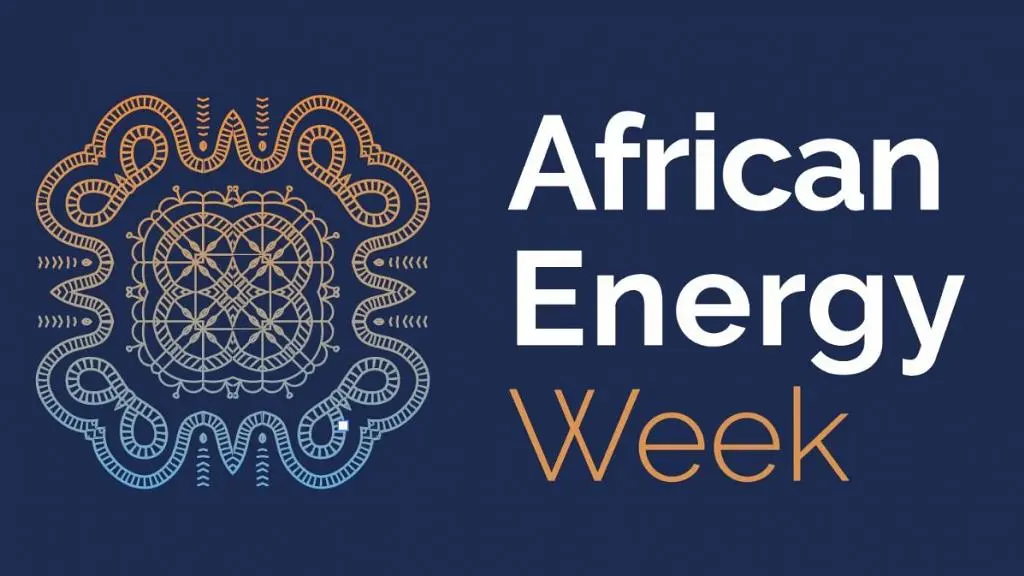By Eyo Nsima
Eskom, one of the few remaining vertically integrated utilities connected to the Southern African Power Pool (SAPP) has continued loadshedding in the process of delivering inadequate supply to consumers.
The company maintained that, “Stage 2 loadshedding will be implemented as previously communicated from 16:00 today until 05:00 on Thursday. Thereafter, Stage 3 loadshedding will be implemented from 05:00 until 16:00 on Thursday followed by Stage 4 loadshedding until 05:00 on Friday. Stage 3 loadshedding will be implemented from 05:00 on Friday until 05:00 on Saturday.”
In a statement obtained by The Daily, www.thedaily-ng.com, the company also disclosed that: “Stage 2 loadshedding will be implemented from 05:00 on Saturday until 05:00 on Sunday. Eskom will publish a further update as soon as any significant changes occur. Please refer to the table below for the schedule breakdowns that have been reduced to 15 089MW of generating capacity while the generating capacity out of service for planned maintenance has increased to 7 147MW. Over the past 24 hours, a generation unit was returned to service at Duvha Power Station.
“In the same period, a generating unit each at Lethabo, Kendal and Kriel power stations was taken offline for repairs. The delays in returning a unit to service at Hendrina, Medupi and two units at Tutuka power stations have contributed to the capacity constraints.
“Five Open Cycle Gas Turbines (OCGTs) at Ankerlig Power Station were taken out of service this morning for a planned upgrade of their control system. We thank all South Africans who continue using electricity sparingly and efficiently in helping to alleviate the pressure on the power system.”
Meanwhile, the Chairman of the African Energy Chamber, AEC, Mr. NJ Ayuk, has proposed increased collaboration with other African States in order to generate, transmit and distribute more and stable power to South Africans and other nationals.
In his opinion article – South Africa’s Energy Crisis Solutions Must Include Collaboration with Other African States – NJ Ayuk, stated: “For South Africans, where were you when the lights went out? is hardly a funny question, and the answer is probably at which time? Because of load shedding by state-owned South African electricity provider Eskom, frequent, widespread rolling blackouts have been happening since 2008. And though the purpose of load shedding is to prevent the entire power generating system from failing under high demand — avoiding the kind of catastrophe that beset North America nearly 60 years ago — unreliable electricity has taken a toll on South Africa’s people, businesses, and institutions, not to mention the country’s financial wellbeing.
“As the African Energy Chamber’s (AEC) new report, The State of South African Energy, notes, it’s not unusual for power to be interrupted for about six hours per day. That’s six hours per day when the engines of the continent’s most industrialized and technologically advanced economy are shut down. It’s been estimated that losses related to power outages amount to somewhere between 1.5 billion rand and 4 billion rand (about $87 million to $232 million) per day. According to the AEC report, South Africa’s economy could have been 17% larger than it is today if load shedding never needed to be implemented (imagine what that would do for the nation’s 34%+ unemployment rate). Despite government efforts to right the ship, so far the problem shows no sign of reversing: 2022 was the worst year ever for power cuts, with South Africa losing about 205 days of electricity.
“While the 1965 Northeastern Blackout was eventually traced to a simple cause — a faulty protective relay at a Canadian power station — the reason for South Africa’s electricity woes is more complex and has been brewing for nearly two decades. But mainly what it comes down to is this: Eskom’s coal-fired power plants are old, defective, and undermaintained, so breakdowns are nearly constant. The lack of investment in new generating capacity doesn’t help, of course, and neither do factors South African President Cyril Ramaphosa outlined in a January 2023 blog post: corruption and criminality, sabotage of infrastructure, rising municipal debt, and a lack of suitable skills. Taken together, he said, they represent a “perfect storm” of problems.
“Just as all eyes were on America after the 1965 blackout, the world is watching for South Africa’s long-overdue response to its coal-driven energy crisis. It’s no surprise that climate activists have seized the opportunity to say this is why Africa needs renewables. (As we all know, they’ve been beating the anti-fossil fuel drum for some time, running fervent campaigns against oil and gas that include what amounts to outright bans on project financing). And considering that the CO₂ emissions produced by Eskom’s coal-fired plants help place South Africa among the world’s top-20 emitting countries, their point is well-taken, at least in that regard. Even President Ramaphosa has jumped on the renewables bandwagon, describing how solar panels on the roofs of houses and businesses can become a source of new generating capacity, with customers able to sell surplus electricity into the grid.
“While the AEC has long supported the role of renewables in expanding reliable electricity to Africans, ramping up enough solar and wind power to make a meaningful difference isn’t something that can happen overnight. As the AEC report notes, however, South Africa is fortunate to have other options that won’t take years or even decades to deploy. South Africa’s energy challenges will be front and center at African Energy Week scheduled to take place on 16-20 October in Cape Town.”
On Neighbors
He stated: “For one thing, the nation should accelerate its own gas agenda to alleviate persistent electricity issues. That includes fast-tracking production license permitting for TotalEnergies’ Brulpadda and Luiperd prospects in the Outeniqua Basin, 175 kilometers offshore the southern coast of South Africa — discoveries representing combined reserves of 3.4 trillion cubic feet (tcf) of natural gas and 192 million barrels of gas condensate. According to published news reports, while some gas from the project will be used in petrochemical manufacturing, a pipeline will carry significant volumes to Eskom’s Gourikwa power plant — making the project integral to South Africa’s gas-to-power aspirations as well as to wean itself off coal-dominated energy generation.
“But increased gas production may not be enough, at least in the short term, to resolve South Africa’s pressing energy crisis. I believe South Africa should also continue to build upon intra-African collaboration, using African resources to generate and deliver energy domestically rather than exporting it abroad. One place South Africa is already making inroads is with neighboring Mozambique, which has emerged as a major global gas competitor after blockbuster offshore natural gas discoveries.
“The report looks at the proposed African Renaissance Pipeline (ARP) project, which will link Mozambique’s vast gas reserves to South Africa via a 2,600-kilometer (1,500-mile)-long onshore pipeline and is expected to expand electricity access throughout the region.
“Not only will the ARP carry liquefied natural gas (LNG) to major cities along the pipeline route, but regional extensions will also provide LNG for electricity to Eswatini, Zimbabwe, Zambia, the Democratic Republic of the Congo, Botswana, and Malawi. In addition to providing an accessible energy source for electricity generation, the ARP will reduce those nations’ oil import bills.
“Construction of the pipeline is scheduled to begin in 2023, but domestic users are already queuing up. There’s interest in almost 60% of the pipeline’s annual capacity, which is estimated to be 18 billion cubic meters (bcm).
“The ARP isn’t the only project tying South Africa and Mozambique. South African energy company Gigajoule and joint development partner TotalEnergies expect their $550 million Matola LNG import terminal in Mozambique to become a major LNG supplier to South Africa. The project will use the existing Rompco gas pipeline between Mozambique and South Africa to meet growing gas demand throughout Africa’s southern region. And, if South African Minister of Mineral Resources and Energy Gwede Mantashe has his way, Matola will provide the feedstock for three power plants in Mpumalanga province that are currently running on coal. (While Matola remains on track for first gas in two years, Randburg-based Renergen began delivering South Africa’s first domestically produced commercial LNG last December.)”
On Namibia
On Namibia, he stated: “Mozambique’s new developments aren’t the only ones South Africa may eventually be able to turn to for a neighborly injection of electricity-generating energy.
“Namibia is also on the cusp of becoming a regional hydrocarbon hub, although more work needs to be done to prove how much gas volumes its oil-rich Orange Basin holds. The AEC report describes early successes by Shell Plc and TotalEnergies at their offshore Graff and Venus wildcat wells and La Rona-1 exploration probe. The Venus-1 wildcat alone is targeting a prospect with multiple billions of barrels of oil. How much-associated gas is present in the basin remains to be determined, but it’s possible there’s anywhere from 10 to 20 trillion cubic feet (tcf) of natural gas just in the vicinity of Venus-1.
“Getting Namibian gas to South Africa won’t happen overnight, of course. It will take time and money to develop the discoveries and build export infrastructure. But, as the AEC report says, Namibia’s role as a natural gas exporter to South Africa cannot be ruled out. And that means that there’s hope that in the future, the question where were you when the lights went out, will be relegated to South African history.”
The Executive Chairman stressed that, “South Africa’s energy challenges will be front and center at African Energy Week scheduled to take place on 16-20 October in Cape Town.”








